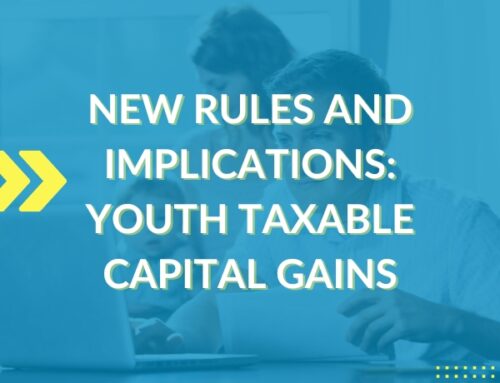Published Oct 20, 2023.
Greetings fellow CPAs! With the introduction of Bill C-47 – the bill that updated Canada’s mandatory disclosure rules – the landscape of tax reporting has undergone a significant shift. This new legislation, which received royal assent on June 22, 2023, seeks to update mandatory disclosure rules for tax transactions, impacting both individual taxpayers and corporations. Given the breadth and complexity of the changes, it’s crucial for us to have an in-depth understanding to guide us and our clients effectively.
We will dive deeper into various aspects of this topic across five different blogs. Here, in Part 1, we’ll delve into the salient features of this bill and discuss the compliance requirements that you should be aware of. In Part 2 we will explore reportable transactions in more detail, including definitions, obligations to repot, and practical applications.
Reportable Transactions: What CPAs Need to Know
The concept of “reportable transactions” is central to the Bill. Such transactions, often associated with tax benefits, must be disclosed within 90 days from the time of entering the transaction. This requirement has implications for partnerships and employers, as their disclosure suffices for their respective partners and employees.
Moreover, Bill C-47 provides specific timelines, particularly for transactions made after June 22, 2023. The rules also apply to transactions that “straddle” this implementation date. This term refers to agreements made before this date but not executed until afterward. Thus, if a taxpayer commits to a reportable transaction before but completes it after this date, the new disclosure requirements will apply.
Introducing Notifiable Transactions
Another noteworthy aspect of Bill C-47 is the introduction of “notifiable transactions”, defined in section 237.4 of the Act. These are transactions that the CRA deems of interest or potentially abusive. To ensure taxpayers and advisors remain compliant, the CRA will maintain a list of designated notifiable transactions, which is expected to be accessible through its website.
Advisors, promoters, and taxpayers involved in such transactions are obligated to disclose them within the same timelines as reportable transactions. However, an exception exists to safeguard solicitor-client privilege. It’s worth noting that the definition of notifiable transactions includes the phrase “substantially similar,” suggesting a broad interpretation could mean that transactions like those designated by the Minister may also be captured by these new provisions.
Uncertain Tax Treatments and Large Corporations
For corporations with substantial assets (at least CA$50 million), Bill C-47 has introduced an additional layer of reporting for what it calls uncertain tax treatments. These are tax treatments used or planned to be used by an entity where there’s uncertainty regarding their compliance with the tax legislation. This requirement adds another layer of complexity for CPAs advising larger corporate clients.
Advance Income Tax Rulings: An Important Change
The new provisions provide a more efficient way to handle advance income tax rulings for reportable transactions. Under the revised regulations, a taxpayer can attach a copy of a favorable advance income tax ruling to the upcoming revised Form RC312. This procedure simplifies the reporting process and eliminates the need for repetitive information. The simplified reporting, however, still requires the identification of the reporting person on the form.
Reassessment Periods: Longer Waits, More Scrutiny
Another major update pertains to the reassessment periods. Under the new legislation, the normal reassessment period will not commence until all mandatory disclosure requirements are satisfied. Failure to comply with the new reporting protocols may result in assessments or reassessments for up to four years after filing. Thus, CPAs should be vigilant about adhering to the mandatory disclosure requirements to prevent complications in the future.
Stiff Penalties: An Incentive for Compliance
Noncompliance comes at a steep price. For unreported notifiable or reportable transactions, the penalties can be as high as CA$100,000 based on the value of the tax benefit. Promoters and advisors face similar fines that can be severe enough to impact their businesses in a big way. There is a silver lining, though: a due diligence defence is available, which can exempt entities from disclosure if they’ve exercised reasonable care, diligence, and skill in assessing whether a transaction is notifiable.
Conclusion and Next Steps
Bill C-47 brings with it complexities that we, as Canadian CPAs, cannot afford to overlook. From new categories of transactions to penalties, the bill has rewritten the rules of the game. While the CRA has provided initial guidance, we can expect further clarifications to follow. Until then, it’s crucial to err on the side of caution.
Whether you are advising individual taxpayers or large corporations, understanding the nuances of this new bill is imperative for accurate and effective practice. With its 90-day reporting deadline for reportable and notifiable transactions, plus an expanded reassessment period, the new legislation demands more proactive tax management. Therefore, keeping yourself updated and ready to adapt is not just recommended; it’s essential.
<p “=””>You can start that process now by registering for one of AJAG’s upcoming courses, which will address some of the areas discussed in this series. Courses like Howard Wasserman’s Income Tax Update – 2023 and John Grummett’s Technical Tax Update 2023 will aid in building your knowledge and understanding of the new reporting obligations and might also answer questions you may already be thinking about.
Disclaimer:
The information contained in this blog post is intended for general informational purposes only and should not be construed as legal, accounting, or tax advice. While every effort has been made to ensure the accuracy and reliability of the content, the author and publisher make no representations or warranties as to the completeness, accuracy, or applicability of any information provided.
Neither the author nor the publisher shall be liable for any errors or omissions in the content, or for any actions taken in reliance thereon. Readers are advised to consult the original legislation or other legal sources for complete and accurate information.






